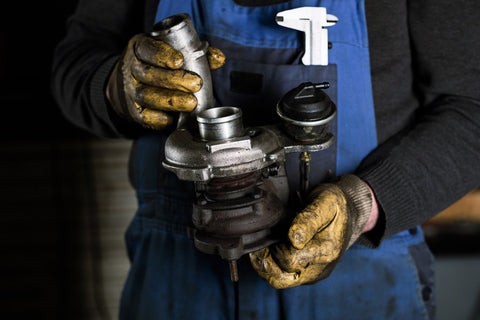A turbocharger significantly boosts engine efficiency and power. However, it’s susceptible to dirt, debris, and carbon buildup, hindering performance. Knowing how to clean a turbo is crucial for maintaining optimal engine health and longevity. This guide provides a step-by-step approach to cleaning your turbo, ensuring it stays in top shape.
Maintaining a clean turbocharger is vital for several reasons. Buildup restricts airflow, reducing engine power and fuel efficiency. Ignoring this can lead to turbo lag, increased emissions, and even catastrophic engine damage. Regular cleaning prevents these issues, extending the turbo’s lifespan and ensuring optimal performance.
Cleaning Your Turbo Without Removal
Cleaning a turbo without removing it is possible and often sufficient for routine maintenance. Here’s a detailed procedure:
1. Accessing the Turbocharger
Locate the turbocharger in your engine bay. This may require removing components like the air intake or intercooler. Consult your vehicle’s service manual for specific instructions. Carefully disconnect and remove any necessary parts to gain access to the turbo.
2. Inspecting for Damage and Buildup
Before cleaning, thoroughly inspect the turbo for damage. Use an endoscope or flashlight to examine the turbine and compressor wheels for cracks, bends, or excessive wear. Also, check for carbon buildup and debris. Significant damage may necessitate turbo replacement.
3. Preparing the Cleaning Solution
Select a turbocharger cleaner specifically designed for this purpose. Avoid harsh chemicals that could damage the turbo. Follow the manufacturer’s instructions for proper dilution and application.
4. Cleaning the Turbo
Using a soft-bristle brush, toothbrush, or compressed air, remove loose dirt and debris. Apply the cleaning solution to areas with heavy carbon buildup, focusing on the turbine and compressor wheels. Allow the solution to dwell for the recommended time, then gently scrub away the deposits.
Applying turbo cleaner to the compressor wheel.
5. Rinsing and Drying
Thoroughly rinse the turbo with clean water to remove all traces of the cleaning solution. Ensure complete drying using compressed air or allowing it to air dry naturally. Moisture can damage the turbo upon restarting the engine.
6. Post-Cleaning Inspection
After reassembling any removed components, start the engine and listen for unusual noises or vibrations. Monitor the turbo’s performance for any signs of issues.
Cleaning a Diesel Turbocharger
Diesel engines often produce more soot and carbon buildup in the turbocharger. While the general cleaning process remains similar to gasoline engines, a few key differences exist:
- Heavier Buildup: Diesel turbos may require more aggressive cleaning and specialized cleaning solutions formulated for diesel soot.
- Potential Removal: In cases of severe buildup, removing the turbo for a more thorough cleaning might be necessary.
Example of heavy soot buildup on a diesel turbo.
Benefits of a Clean Turbo
Regular turbo cleaning offers numerous benefits:
- Extended Turbo Lifespan: Prevents premature wear and tear.
- Improved Fuel Efficiency: Optimized airflow enhances combustion.
- Enhanced Engine Performance: Restores power and responsiveness.
- Reduced Turbo Lag: Minimizes delay in power delivery.
- Prevents Engine Damage: Avoids damage from debris and restricted airflow.
A clean turbo minimizes turbo lag, providing quicker acceleration.
Conclusion
Cleaning your turbo is essential for maintaining optimal engine performance and longevity. By following this guide, you can effectively clean your turbo, preventing costly repairs and ensuring a smooth, powerful driving experience. Regular maintenance is key to maximizing the lifespan and efficiency of your turbocharged engine.

